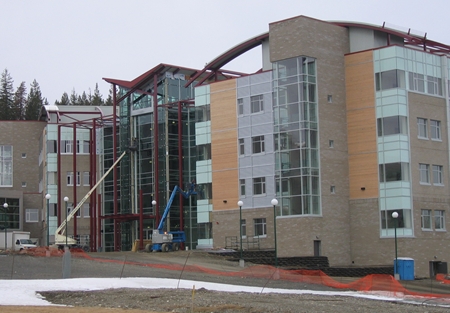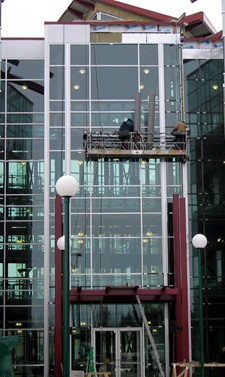Teaching and Learning Centre
By 250 News

New Teaching and Learning Centre at UNBC, staff starting to move in now
UNBC staff have started moving into the new Teaching and Learning Centre. The 92,000 square foot building is the largest building on the campus and is expected to officially open later this spring.
The building has had its challenges. 
The construction costs are up about 8% over budget and there has been an issue with the elevator. In an update to the University’s Board of Governors, the Chief Financial Officer for UNBC says the preliminary inspection of the elevators by the Safety Authority revealed there were a number of "code issues that had to be dealt with if the elevator was to pass inspection and before the University would be allowed to occupy the building.
According to the report, there were substantial changes needed for the structure of the elevators including partially enclosing the exposed shafts which open into the atrium. Those changes, combined with a couple of others, added another $30 - 50 thousand dollars to the building’s cost.
The University is of the position the problems are the responsibility of the architect and their consultants, and will be asking Stantec Architecture to reimburse the University.
Previous Story - Next Story
Return to Home










